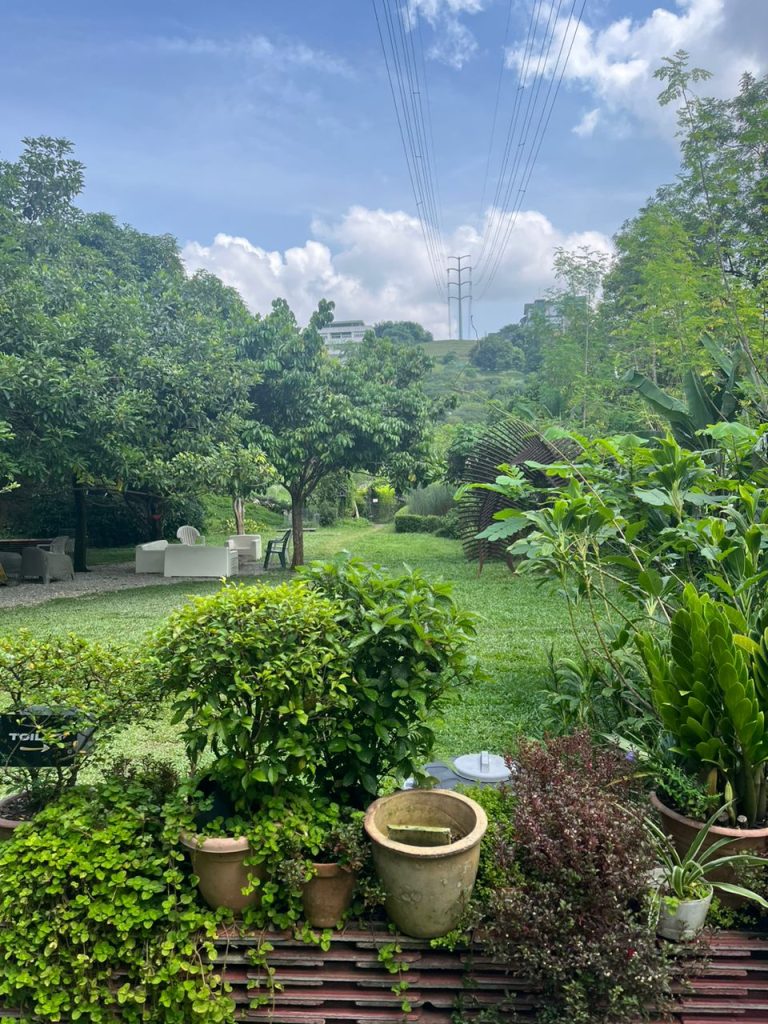People and Places
Kebun-Kebun Bangsar
It was in October 1987 when Malaysia experienced one of the darkest periods in its history that tested its commitment to democracy. Tunku Abdul Rahman lamented his deepest fears when he said, “We are on the road to dictatorship. I cannot see it any other way… This is no democracy.” This grim spell, a black dot in Malaysia’s history, saw, within a month, some 106 to 119 Malaysians – including political activists, opposition politicians, intellectuals, students, artists, and scientists – who stood up to the government of the day, detained without trial under the draconian Internal Securities Act 1960 in an operation called Ops Lalang. It was this very undemocratic political crackdown that ignited Ng Seksan’s lifelong activism in the area of human rights, determined to place justice where it belongs.
Although Seksan was in New Zealand during this time, 5500 miles away from Malaysia’s shores, his ideals for a just and equitable Malaysia were simmering in his very being. After a 12-year extended stay in New Zealand that earned him a degree in Civil Engineering and later a career as a Landscape Architect, he was determined to bring change to Malaysia so that the tenets of democracy and separation of powers would be restored.
Decades later, Malaysia was once again tested with another even bigger scandal. The pilferage of Malaysia’s wealth that culminated in the 1MDB scandal gave rise to fierce opposition from Harapan. During this time, in 2013, a few political and human rights activists gathered and Seksan made use of the opportunity to work together with Nurul Izzah to ignite ‘the Malaysian Spring’. An idea came to mind to start planting yellow flowers in an effort to educate the public that they have rights and should stand up to corruption committed by the powerful in a peaceful way. The colour yellow signifies happiness and friendship, and flowers bring about beauty wherever they are planted, a symbol that justice can be achieved through non-violent means. When ‘the Malaysian Spring’ first started, 20,000 flowers were planted by a small group of volunteers, now the number has reached over 200,000 yellow flowers planted all over the country.
These political incidents led to a spark that paved the way for the creation of Kebun-kebun Bangsar. It so happened that during the time, TNB had a vacant piece of land in Bangsar and Seksan thought of a brilliant idea to use this land to bring the community together. The ball started rolling when Seksan, together with a few other idealists, conceptualised Kebun-kebun Bangsar in 2015 with the cooperation of DBKL and Local Agenda 21. With seed money provided by Think City, the land was ploughed to develop a project that stands as a symbol of what can be achieved if Malaysians of all backgrounds and creed come together and build something for a worthy cause.
Kebun-kebun Bangsar lies within the residential area of Bangsar on a vacant land where electric pillions were erected. The land was void of commercial value due to safety concerns, as it could be dangerous for anyone to build habitations on it. Seksan saw its potential and imagined an “oasis” in the middle of a bustling concrete jungle where one finds calm and peace. It was a garden magnificent in its abundant foliage, a plethora of edible vegetables with wild animals roaming free. It was built by the hands of Malaysians from all walks of life , and sustained by donations from the public. The garden’s produce are donated to the poor and hungry refugees. Although the land may not have commercial value, but as Seksan led me to an elevated point along his vegetable patch, I could see that Kebun-kebun Bangsar captured a panoramic view of the skyline which can only be seen in selected points in the city.
The survival of Kebun-kebun Bangsar has not come without its challenges throughout the years. Kebun-kebun Bangsar has had to deal with opposition coming from those who are not supportive of its existence. Complaints, from “the animals being a nuisance” to the “foul stench that comes from the garden”, have not deterred Seksan and netizens who believe in its cause. Finally, Kebun-kebun Bangsar has received recognition from the authorities, including a former PM who admired the project. That did not stop opposers of the project to try to evict Kebun-kebun Bangsar out of its home, and till today, Kebun-kebun Bangsar fights for its survival against authorities and disobliging neighbours.
Although an unknown future looms for Malaysia, Seksan disagrees with the pessimists who believe that we are on a path to failure. “It depends on who you ask,” he says. “I believe there is something bright that awaits Malaysia at the end of the tunnel.” Kebun-kebun Bangsar is a testament to that, a place where an ideal is cultivated and proceeds from labour are given away to the less fortunate by the sheer cooperation of Malaysians, regardless rich or poor. Seksan holds the view that Malaysia’s success goes beyond the role of the government, instead it is primarily built by the ordinary people and the private sector through determination and unbridled tenacity. With this optimism still very much alive, I am sure that Malaysia is in good hands.


In The Beginning
“Your heart should adapt and be as good as normal.” With that, I was given...
Story: I hate you
“It’s time,” Danial proclaimed during our anniversary dinner. It had been a year since the...